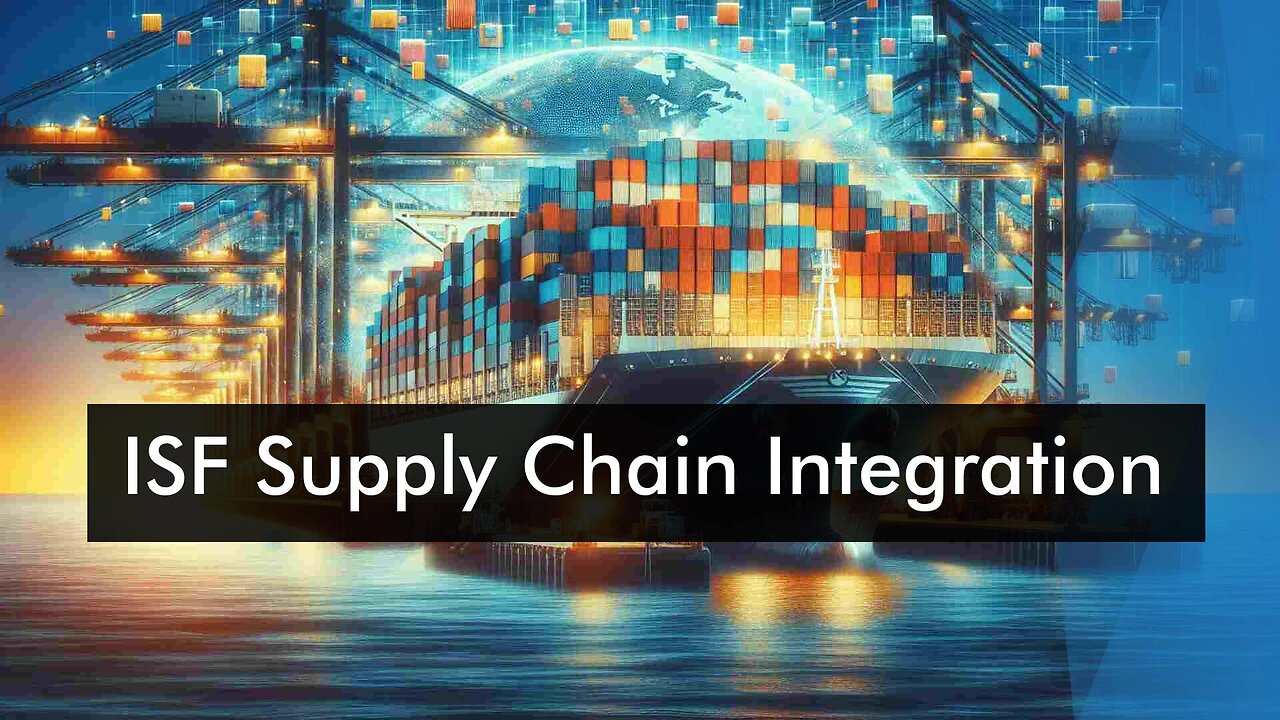Premium Only Content

Unlocking Efficiency: Maximizing Supply Chain Potential with ISF Integration
License To Import // 323-578-6432 // file@licensetoimport.com // www.licensetoimport.com
This response explores the potential benefits of integrating Importer Security Filing (ISF) with supply chain management systems for customs brokerage professionals. ISF is a mandatory requirement established by US Customs and Border Protection (CBP) for inbound shipments to the United States, involving the submission of specific information about cargo before it arrives at the port of entry. Integrating ISF with supply chain management systems offers several advantages. Firstly, it enhances supply chain visibility by allowing real-time tracking of ISF submissions, container movements, and potential disruptions. Secondly, it streamlines documentation handling by automating data flow and reducing errors. Moreover, integrating ISF facilitates integrated risk assessment and compliance management by identifying risk factors and ensuring adherence to regulatory requirements. Lastly, it optimizes collaboration and communication by enabling seamless information sharing and efficient exception management. Overall, integrating ISF with supply chain management systems empowers customs brokers to navigate international trade complexities with greater efficiency and compliance.
#usimportbond #isfcustomsbroker #uscustomsclearing #isfentry
Video Disclaimer Here: This video is solely for education and is not endorsed by any US government agency.
0:32 Importer Security Filing (ISF) is a mandatory requirement by U.S. Customs for inbound shipments to the United States, providing crucial data about cargo before arrival.
1:12 Integrating ISF with supply chain management systems enhances supply chain visibility, allowing real-time tracking of shipments and improved decision-making.
1:42 Integrated risk assessment flags high-risk shipments early, helping prioritize resources and ensure compliance with regulations.
3:16 Collaboration and communication optimization through integration fosters seamless information sharing, efficient exception management, and stronger relationships within the supply chain.
-
 2:09
2:09
License To Import
25 days agoWhen To File ISF For Outdoor Telescope
4 -
 24:58
24:58
Law&Crime
9 hours ago $2.57 earnedSecond Note Leaves Disturbing Clues in New York City Killings
33.5K9 -
 1:36:57
1:36:57
Badlands Media
1 day agoAltered State S3 Ep. 39: Earthquakes, Energy Games & the Fall of the Narrative
71K14 -
 2:04:07
2:04:07
Due Dissidence
14 hours agoCharlie Kirk's GAZA LIES, Caitlin Clark Stalker, Palantir Goes Hollywood - w/ Kyle Matovcik | TMWS
38.3K8 -
 2:54:43
2:54:43
I_Came_With_Fire_Podcast
15 hours agoAmerica First, Trump Threatens China, Your Friendly Neighborhood Illegal, EPA Gets a "W"
37.6K8 -
 4:40:21
4:40:21
Geeks + Gamers
6 hours agoGeeks+Gamers Play- MARIO KART WORLD
27.5K2 -
 8:28:19
8:28:19
Dr Disrespect
15 hours ago🔴LIVE - DR DISRESPECT - BATTLEFIELD 1 - FULL GAME
170K7 -
 1:39:26
1:39:26
Glenn Greenwald
10 hours agoStephen Miller's False Denials About Trump's Campus "Hate Speech" Codes; Sohrab Ahmari on the MAGA Splits Over Antitrust, Foreign Wars, and More | SYSTEM UPDATE #495
114K77 -
 1:57:28
1:57:28
Omar Elattar
11 hours agoThe $300M CEO: "The One Skill That Made Me Rich In 15 Different Countries!"
21.1K -
 4:52:50
4:52:50
xXFadedAngelXx
6 hours ago180 HOURGLASS PULL! Wisdom of Sea and Sky (Pokemon TCG Pocket) Then some RL with Meditayte later
8.01K